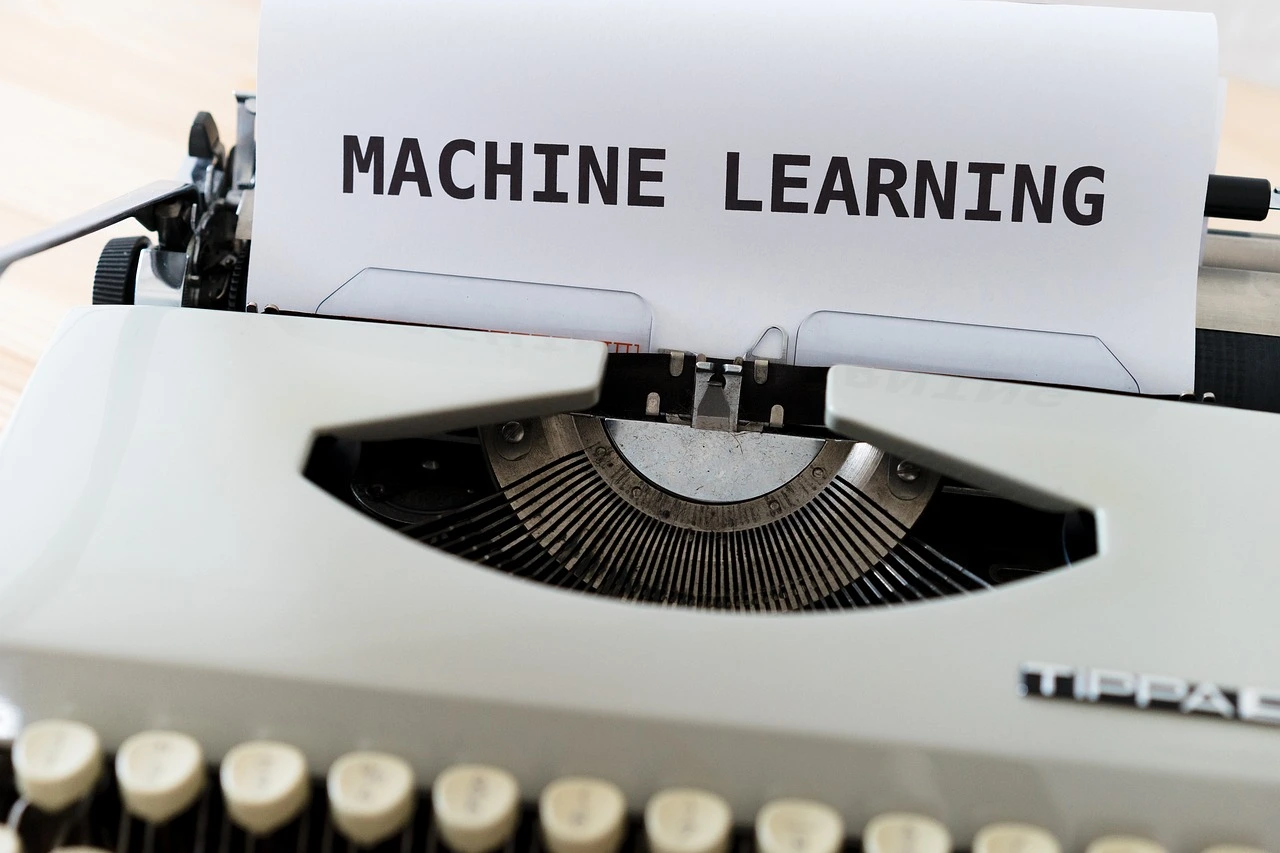Essential Machine Learning Algorithms: Linear Regression, Decision Trees, and K-Nearest Neighbors Explained, Machine learning algorithms drive predictive analytics and data modeling, unlocking powerful insights. Linear regression, decision trees, and k-nearest neighbors are foundational techniques that open up endless possibilities for data analysis. This article delves into the principles and practical applications of these essential machine learning algorithms, offering valuable insights and inspiration for harnessing machine learning creativity.
Exploring Linear Regression
Understanding the basics
The primary goal of linear regression is to find the best-fit line for a set of data points, aiming to accurately model the relationship between predictors and responses. Linear regression assumes a linear correlation between the independent variables (predictors) and the dependent variable (response). This technique involves fitting a line by adjusting its slope and intercept to minimize the sum of the squared differences between the observed values and the predictions made by the line.
To illustrate, consider a simple dataset where the test score (Y) increases with the number of hours studied (X). This dataset suggests a linear relationship, which linear regression can model to predict Y based on any given X. Linear regression’s simplicity and interpretability make it an ideal starting point for understanding machine learning models.
Despite its simplicity, linear regression has significant implications, forming the foundation for more complex models and being a core component in machine learning. In our Python implementation, we’ll explore how to apply linear regression to real-world data and extend its application to more intricate scenarios.
Implementing in Python
After understanding linear regression theory, the next step is to apply it. Python is ideal for such projects due to its rich library ecosystem.
Linear regression is usually implemented using scikit-learn, which is simple and efficient. Steps are summarized here:
Import necessary libraries
Import the necessary libraries first. Sklearn provides functions for splitting the dataset and linear regression, while numpy performs numerical operations.
import numpy as np
from sklearn.model_selection import train_test_split
from sklearn.linear_model import LinearRegression
from sklearn.metrics import mean_squared_error, r2_score
Split data into training and testing sets
Load your dataset into a Pandas DataFrame before running this code. Assume your dataset is in df and you want to predict ‘target’.
# Assuming your dataset is a Pandas DataFrame named df
# X represents the features, while y is the target variable
X = df.drop(‘target’, axis=1) # drop the target variable from the dataset to isolate features
y = df[‘target’] # the target variable
# Split the dataset into training (70%) and testing (30%) sets
X_train, X_test, y_train, y_test = train_test_split(X, y, test_size=0.3, random_state=42)
Create and train linear regression model
Next, we fit a LinearRegression model to our training data.
# Create linear regression object
regressor = LinearRegression()
# Train the model using the training sets
regressor.fit(X_train, y_train)
Evaluate the model
We evaluate the model’s performance using metrics like MSE and R² score after making predictions on our test set.
# Make predictions using the testing set
y_pred = regressor.predict(X_test)
# The mean squared error
mse = mean_squared_error(y_test, y_pred)
print(f”Mean squared error: {mse}”)
# The coefficient of determination: 1 is perfect prediction
r2 = r2_score(y_test, y_pred)
print(f”Coefficient of determination: {r2}”)
The following steps will create a basic linear regression model for your dataset. These blocks require the sklearn and numpy libraries and a Pandas DataFrame with your dataset loaded and preprocessed (if needed).
The above steps give a broad overview, but the details matter. Parameter tuning and data preprocessing can improve the model’s predictive power. An astute practitioner will find the process meticulous but rewarding.
Handling multivariate data in linear regression
In machine learning, managing multivariate data—where multiple variables interact—is crucial for model performance. Aligning data from various sources is akin to conducting an orchestra, ensuring that each data variable harmonizes well. This alignment is achieved through methods like feature concatenation, extraction, and using tree-based or metric-based learning techniques.
Addressing missing data is essential, as it can negatively impact datasets and introduce bias into models. The key is to focus on meticulous data collection to ensure completeness and accuracy for each variable.
High variance is another challenge in machine learning. The bagging algorithm helps by creating multiple data subsets through resampling. This technique generates diverse rules and combines predictions to reduce variance. The table below outlines steps to mitigate high variance effectively:
Data quality is fundamental to successful machine learning. Managing diverse input variables and formats requires a strategic approach to ensure accurate data collection and management. By carefully planning and executing these strategies, we can maintain data integrity and build robust, insightful machine learning models.
Decoding decision trees
Tree structure
Decision trees are both elegant and powerful, offering a clear structure for making decisions. In a decision tree, each internal node represents a test on a specific attribute, each branch represents the outcome of that test, and each leaf node represents a class label, determined after evaluating all attributes. Paths from the root to the leaf nodes embody classification rules.
Decision trees systematically split data into subsets based on the most informative attributes at each level. A simplified binary decision tree involves:
Root Node: Represents the entire dataset.
Decision Nodes: Conditional splitters that divide the data based on attribute values.
Leaf Nodes: Terminal nodes that assign class labels or predict outcomes.
The interpretability of decision trees stems from their resemblance to human decision-making processes. The performance of a decision tree hinges on the algorithm used to select the ‘best’ attribute at each node. Common metrics include Gini impurity and information gain for classification trees, and variance reduction for regression trees. The choice of algorithm significantly influences both the tree’s accuracy and complexity.
To maintain model effectiveness and avoid overfitting, decision trees require thoughtful pruning. Pruning simplifies the tree by removing branches that do not contribute to the final decision, balancing model complexity with accuracy. Statistical infographics can illustrate how pruning impacts the tree’s structure.
The two primary pruning methods are:
Pre-Pruning (Early Stopping): Stops the growth of the tree when further splits are deemed unnecessary. This method can conserve computational resources but may risk underfitting due to conservative growth.
Post-Pruning (Cost Complexity Pruning): Involves growing the tree fully and then removing branches with low predictive power. This approach is more thorough but computationally intensive.
Each pruning method has its advantages and trade-offs, depending on the dataset and the desired balance between model complexity and predictive performance. Pre-pruning is beneficial for efficiency but may underfit, while post-pruning offers a more refined model at the cost of greater computational effort. The table below summarizes these trade-offs.
Ensemble methods in decision trees
After exploring decision trees, ensemble methods offer an exciting advancement in machine learning. Ensemble learning leverages the combined expertise of multiple models to achieve more accurate and reliable predictions, akin to consulting a panel of experts rather than relying on a single source. This approach is particularly effective for complex tasks such as sentiment analysis, where it enhances performance metrics significantly.
Ensemble methods strategically aggregate diverse models, each bringing its own strengths and perspectives to the decision-making process. Key aggregation techniques include:
Majority Voting: Balances simplicity with effectiveness by selecting the most common prediction among multiple models.
Bagging (Bootstrap Aggregating): Reduces variance by training multiple models on different subsets of the data and averaging their predictions.
Boosting: Improves model accuracy by sequentially training models to correct errors made by previous ones, thus enhancing predictive performance.
Stacking: Combines predictions from multiple models using a meta-model to improve overall accuracy and robustness.
Selecting and combining models in ensemble methods requires a thorough understanding of the problem and the strengths of each model. Ensemble techniques highlight the power of collaboration in machine learning, demonstrating that no single algorithm is universally superior. Instead, the diversity of models working together can lead to superior results.
Unveiling K-nearest neighbors
The K-Nearest Neighbors (KNN) algorithm is a robust and versatile tool in machine learning, commonly used for both classification and regression tasks. KNN uncovers valuable insights from datasets and enhances prediction accuracy by leveraging the principle that similar data points are likely to be close to each other. This algorithm helps identify patterns and relationships, enabling deeper exploration of data and better problem-solving capabilities.
The basic operation of KNN involves two key components:
Number of Neighbors (K): This parameter determines how many nearest neighbors to consider when making predictions. Adjusting K affects the model’s performance— a smaller K can lead to a more flexible fit with low bias but high variance, while a larger K results in a smoother decision boundary with lower variance but higher bias. Choosing the optimal K is crucial for balancing model complexity and accuracy.
Distance Metric: KNN calculates the distances between data points to identify the nearest neighbors. The choice of distance metric (e.g., Euclidean, Manhattan) can significantly influence model performance and depends on the nature of the data. Understanding different distance metrics is essential for fine-tuning the KNN model.
By exploring these aspects, KNN enables us to reveal hidden patterns in data, leading to more accurate predictions and a deeper understanding of the underlying relationships within the dataset.
Distance metrics
The distance metric in the K-Nearest Neighbors (KNN) algorithm significantly influences model performance by determining how ‘nearness’ between data points is calculated. Selecting the appropriate distance metric is crucial, akin to choosing the right lens to view your data effectively.
Here are some commonly used distance metrics:
Euclidean Distance: The most intuitive metric, measuring the straight-line distance between two points in Euclidean space. It’s ideal for most continuous numerical data.
Manhattan Distance: Also known as L1 distance, this metric calculates the sum of absolute differences in coordinates, making it suitable for grid-like path planning or when dealing with features on different scales.
Hamming Distance: Used for categorical data, it counts the number of positions where the symbols differ. This metric is particularly useful in text analysis and applications involving binary or categorical variables.
Cosine Similarity: Measures the angle between two vectors, useful in text analysis and high-dimensional spaces where the magnitude of vectors may vary.
Each distance metric has its strengths and limitations. Depending on the nature of your dataset and the specific requirements of your model, a combination of metrics or a custom distance function may offer the best results. Tailoring the distance metric to match dataset characteristics and application goals can enhance the performance and accuracy of the KNN algorithm.
Choosing the right ‘K’
Selecting the optimal ‘K’ in the K-Nearest Neighbors (KNN) algorithm is a critical balancing act between underfitting and overfitting. The choice of ‘K’ determines the granularity of the classification or regression task. A smaller ‘K’ can lead to overfitting, making the model overly sensitive to noise in the data, while a larger ‘K’ can cause underfitting by overly smoothing the predictions.
To find the best ‘K,’ consider the following strategies:
Cross-Validation: Evaluate the model’s performance with different ‘K’ values using cross-validation. This helps identify the ‘K’ that minimizes the validation error rate.
Validation Error Rate: The optimal ‘K’ is typically the one that results in the lowest validation error, balancing model complexity and accuracy.
Heuristic Starting Point: A common heuristic is to start with the square root of the number of data points and then adjust ‘K’ based on performance.
It’s important to note that the optimal ‘K’ is not a one-size-fits-all value. It should be tailored to the specific dataset and problem context, considering factors like data distribution and noise levels. Ultimately, the choice of ‘K’ should aim to maximize predictive accuracy while maintaining generalizability.
Impact of outliers in K-nearest algo
Outliers can significantly distort the results of the k-nearest neighbors (KNN) algorithm, leading to less accurate predictions. Outliers are data points that deviate markedly from the overall pattern of the data, and their presence can mislead the KNN algorithm during decision-making processes.
Since KNN depends heavily on the proximity of data points, outliers can disproportionately affect its performance. An outlier can alter the composition of a neighborhood, potentially leading to misclassification or erroneous regression predictions.
To mitigate the impact of outliers, consider the following methods:
Data Cleaning: Identify and remove outliers caused by data entry errors or measurement inaccuracies.
Robust Scaling: Use techniques such as median and interquartile range (IQR) scaling to reduce the influence of outliers on the data.
Distance-Based Adjustments: Implement weighted distances in KNN, giving less influence to distant outliers and more weight to closer, more relevant neighbors.
It is crucial to conduct a thorough analysis to decide whether outliers should be removed as anomalies or retained as valuable data points that provide unique insights. The decision should align with the dataset’s context and the goals of the analysis, ensuring that the treatment of outliers supports the overall objectives of the study.
Conclusion: Mastering Foundational Machine Learning Algorithms—Linear Regression, Decision Trees, and K-Nearest Neighbors
In conclusion, linear regression, decision trees, and k-nearest neighbors are essential machine learning algorithms for predictive modelling and data-driven decision making.
These algorithms lay the groundwork for machine learning principles and are essential for beginners and experts.
Mastering these algorithms allows one to create innovative solutions and advance artificial intelligence. These foundational algorithms form the basis for more complex models and techniques as we explore machine learning, enabling exciting AI advances.


















